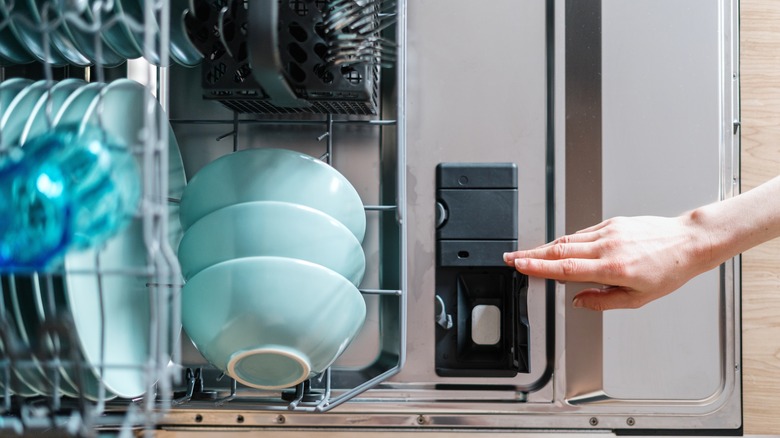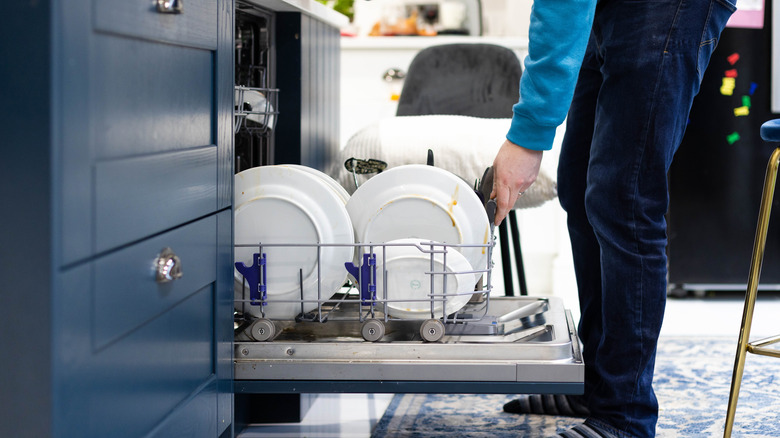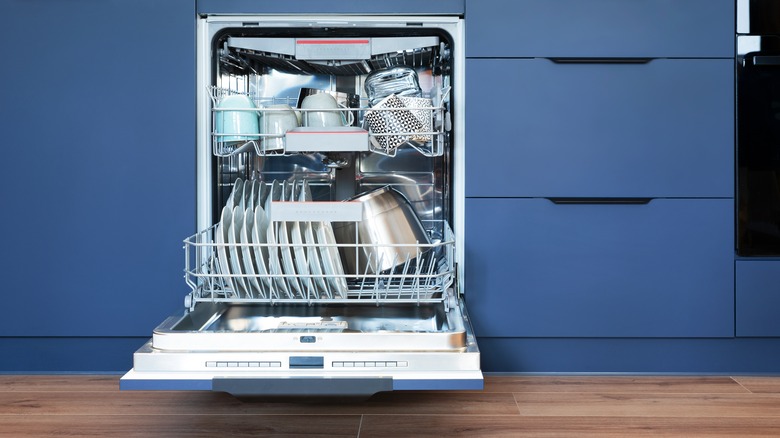Yes, There Is A Right Way To Load Your Dishwasher
No household appliance has sparked more discussion than the dishwasher. Between the great pre-rinse debate and the optimal way to organize plates, cups, and silverware, most of us who care to care have strong opinions about how the washing gets done in the modern age. However, these differences tend to be more than personal preferences, and we're sorry to report some of you are just plain wrong about how it's done. The way you load your dishwasher matters; it affects the cleanliness of your dishes, the lifespan of your kitchen utensils, and even water usage.
If you've ever found yourself caught up in a dishwasher-loading lecture from an opinionated family member, a seemingly savvy social media influencer, or a meticulous roommate, you've probably second-guessed yourself. Have you been doing this simple household task incorrectly your whole life? Let's start with some good news: there's no one way to load a dishwasher, as long as you follow some key guidelines.
The art of dishwasher organization
While a sense of spatial awareness inside the wash box can help, there are some solid rules that appliance experts swear by. To settle the loading debate once and for all, we turn to the definitive guide from Whirlpool. A good rule of thumb: place large items (medium to large plates and bowls) on the bottom rack and smaller, more delicate items (cups, glasses, mugs, small plates or bowls, dishwasher-safe plastic, and long utensils) on the top rack.
Position flat pans and platters towards the sides or back of the dishwasher to avoid blocking the flow of detergent. (Psst... for advice on the utensil drawer, check out our guide to loading utensils.) Also, make sure dishes face the center of the dishwasher for optimal jet contact, and angle cups and bowls downward to prevent water pooling and ensure proper drying. Try to avoid placing items over tines when possible — this can lead to scratches and items being jostled around.
Consumer Reports highlights several items that shouldn't be tossed in the dishwasher at all. Sharp-edged items, like knives or blades, are better off hand-washed to prevent dulling. Wooden items, including cutting boards and spoons, can warp and crack with dishwasher exposure. Pots and pans are generally a no-go, especially cast iron and non-stick varieties. Stainless steel is an exception, though frequent dishwasher cleaning can lead to corrosion.
Ensuring peak performance from your dishwasher
What you do before and after loading your dishwasher matters too, starting with the hotly debated pre-rinse. Experts across this space are unanimous about one thing — scrape your dishes, don't rinse them. And before you toss your kitchen sponge at the screen in protest, let's hear them out.
The logic behind this is that pre-rinsing hinders your detergent's effectiveness. TikTok cleaning expert @melissadilkespateras explains that detergent — packed with enzymes and grease-trapping molecules — needs food to cling to do its job. If you need another reason to cut down on pre-rinsing, using your dishwasher is more eco-friendly too. She notes that you only have to run your tap for two minutes to use up four gallons of water, the same amount a dishwasher uses for a whole wash cycle.
If you're still clutching your dish scrub brush, remember that eggs, cheese, and stubborn starchy residues may still need a light pre-rinse or soak. These substances can get baked on by the heat of your dishwasher. Also, keep in mind that both crowded and dirty dishwashers lead to dirtier dishes. Cleaning your dishwasher and its filter regularly, along with other scheduled maintenance like cleaning your oven will keep your kitchen humming along.


